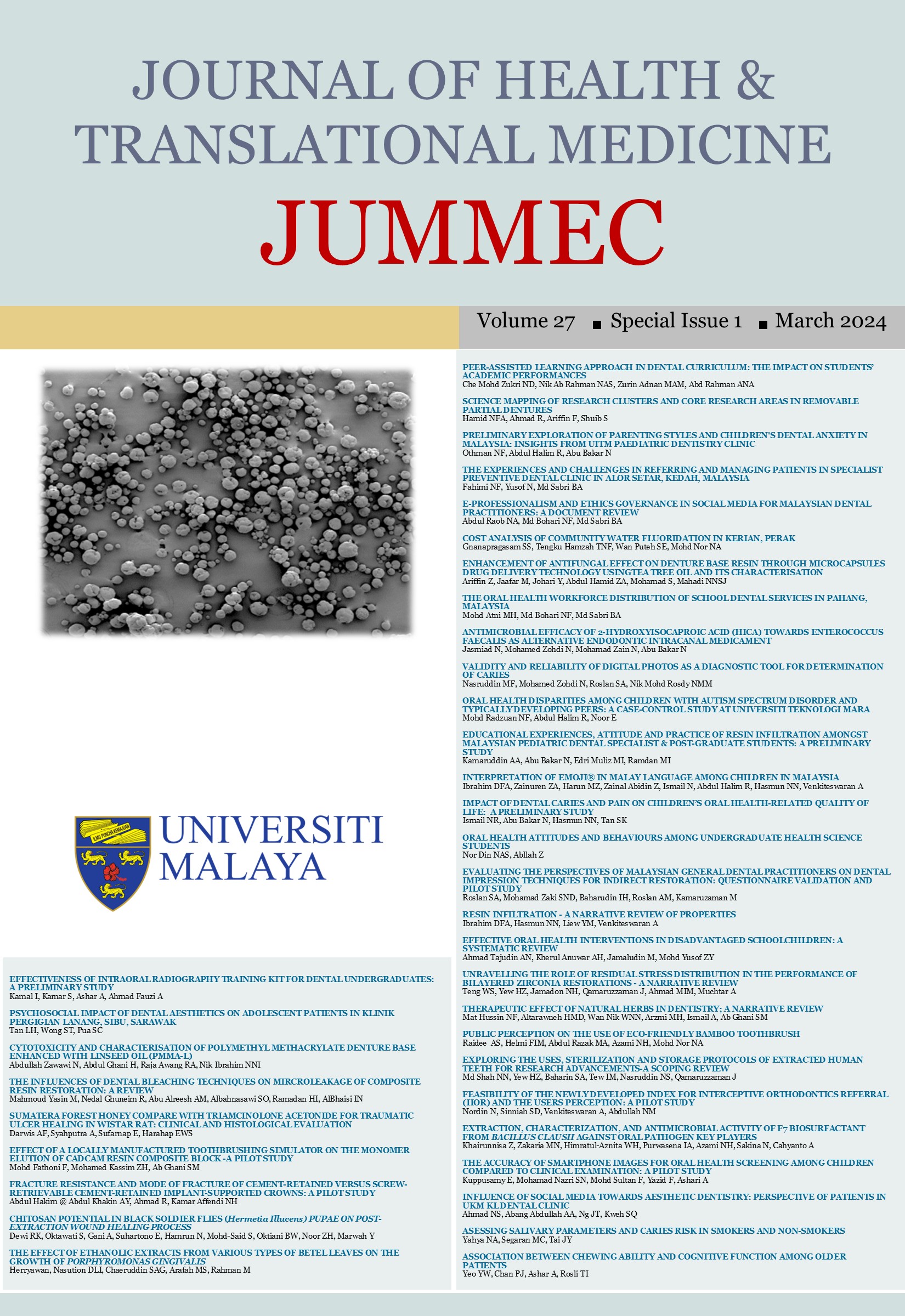FRACTURE TOUGHNESS AND FRACTURE MODE OF CEMENT-RETAINED VERSUS SCREW-RETRIEVABLE CEMENT-RETAINED IMPLANT-SUPPORTED CROWNS: A PILOT STUDY
Received 2024-03-01; Accepted 2024-03-26; Published 2024-03-27
DOI:
https://doi.org/10.22452/jummec.sp2024no1.35Abstract
The aim of this pilot study was to compare the fracture toughness and fracture mode of cement-retained versus screw-retrievable cement-retained implant-supported monolithic zirconia crowns. Ten implant-supported crowns were made from monolithic CAD/CAM zirconia and equally divided into control and test groups. The control group received cement-retained monolithic zirconia crowns (CR), while the test group received screw-retrievable cement-retained monolithic zirconia crowns (SRCR). The crowns were then bonded to prefabricated Variobase titanium-based abutments with resin luting cement. To simulate the aging process in the oral cavity, all samples were undergone thermal cycling machine. After ageing, each group underwent a single load fracture test to analyze the fracture load, and the fracture mode was evaluated using scanning electron microscopy (SEM). The Mann-Whitney U test was used to compare fracture toughness, and statistical significance was set at p<0.05. The mean fracture toughness of CR crowns was 2945.49 ± 511.426 N, while that of SRCR crowns was 2897.82 ± 510.837 N, but the difference was not significant (U=10, p= 0.917). SEM examination revealed that all failures originated from the fitting surface of the crowns. The titanium-based abutment remained intact in all specimens. Within the limitations of this pilot study, the CR showed higher fracture toughness than SRCR implant crown, but both specimen fracture at six times more than the average maximum bite force of posterior tooth. The presence of screw access in SRCR has affected the fracture mode.
Downloads
Downloads
Published
Issue
Section
License
All authors agree that the article, if editorially accepted for publication, shall be licensed under the Creative Commons Attribution License 4.0 to allow others to freely access, copy and use research provided the author is correctly attributed, unless otherwise stated. All articles are available online without charge or other barriers to access. However, anyone wishing to reproduce large quantities of an article (250+) should inform the publisher. Any opinion expressed in the articles are those of the authors and do not reflect that of the University of Malaya, 50603 Kuala Lumpur, Malaysia.


